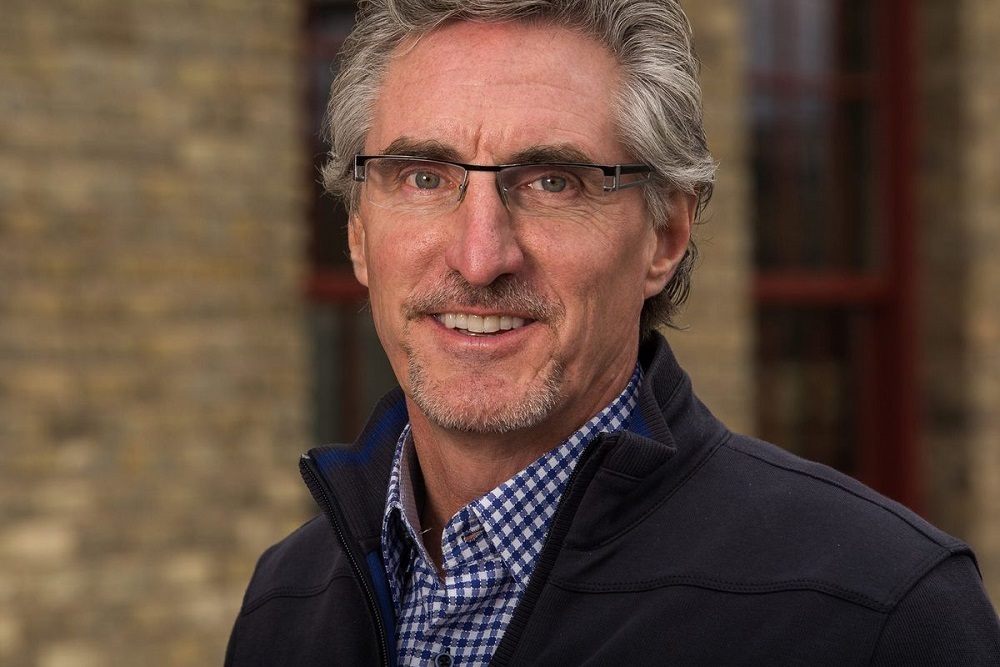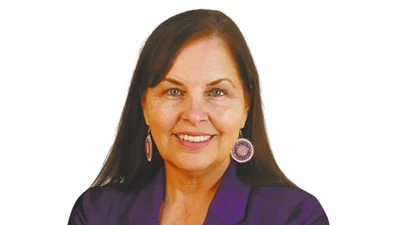Gov. Doug Burgum
Gov. Doug Burgum
Natural-gas infrastructure shortage serves as oil-production bottleneck, speakers say
 Attendees to the Energizing North Dakota’s Future conference held last month at UND’s Energy & Environmental Research Center listen to a panel featuring (from the left) North Dakota Lt. Gov. Brent Sanford, Commerce Commissioner James Leiman, Tax Commissioner Brian Kroshus and Al Anderson, director of the Clean Sustainable Energy Authority. Photo by Kari Suedel/Energy & Environmental Research Center.
Attendees to the Energizing North Dakota’s Future conference held last month at UND’s Energy & Environmental Research Center listen to a panel featuring (from the left) North Dakota Lt. Gov. Brent Sanford, Commerce Commissioner James Leiman, Tax Commissioner Brian Kroshus and Al Anderson, director of the Clean Sustainable Energy Authority. Photo by Kari Suedel/Energy & Environmental Research Center.
North Dakota is heading for an oil production bottleneck unless it either finds uses for the natural gas it produces or devises ways to transport the gas to larger markets, according to speakers at the sixth annual Energizing North Dakota’s Future conference.
 Gov. Doug Burgum
Gov. Doug Burgum
Held June 27-28 at UND’s Energy & Environmental Research Center (EERC), the event brought together experts from all energy sectors – along with legislators and state officials – to discuss critical energy topics. This year’s event featured keynote addresses from U.S. Senators John Hoeven and Kevin Cramer, as well as North Dakota Gov. Doug Burgum.
The event kicked off with a welcome from EERC CEO Charles Gorecki, who highlighted the energy industry’s impact on North Dakota’s economy.
“More than half of the state’s annual income comes from tax revenue from oil,” Gorecki said. “And since we have been producing oil out of the Bakken formation, the tax revenue from that alone has been more than $24 billion, and we have the potential to produce so much more.”
Too much gas
The problem facing the state, as explained by Justin Kringstad, director of the North Dakota Pipeline Authority, is the unique aspect of oil and gas production from the Bakken and Three Forks shale formations in western North Dakota.
“One thing that is unique about the Bakken and Three Forks is how rich our gas stream is,” he said. “I’m not aware of any oil or associated gas play anywhere in the world that has a richer gas stream than we have in the Bakken. It’s more than double most other places.
“We have a resource available in this gas stream that is unique,” Kringstad continued. “It provides us some opportunities – as well as challenges – going forward. We need solutions for the dry gas – methane and ethane components. The other opportunities are in the propane, natural gas liquids and heavier commodities.”
 Justin Kringstad, director of the North Dakota Pipeline Authority, explained the need to find solutions that either use gas production from the Bakken within the state or develop infrastructure to transport it to new markets. Photo by Kari Suedel/Energy & Environmental Research Center.
Justin Kringstad, director of the North Dakota Pipeline Authority, explained the need to find solutions that either use gas production from the Bakken within the state or develop infrastructure to transport it to new markets. Photo by Kari Suedel/Energy & Environmental Research Center.
Burgum noted that even though the state’s oil production has declined from 1.5 million barrels per day to 1.1 million barrels per day, the amount of gas production has remained the same.
“We’ve got a gas takeaway problem,” he said. “If we don’t solve the gas takeaway problem or the gas utilization problem – if we don’t utilize that gas in North Dakota – it’s going to put a cap on our oil production.
“And the oil production is the thing that drives the revenue which pays for universities and pays for schools and everything else. If you want more research dollars or whatever, then we’ve got to keep the engine rolling,” Burgum concluded.
Kringstad commended the EERC for the work it’s done in helping industry to optimize oil production.
The good news
“We continue to have a rosier and rosier picture of what we’re capable of doing here in the state on wells,” he said. “We’re continuing to improve on technology that we’ve perfected and on what we would typically call the core or Tier I sweet spot. Things continue to look very strong for the basin the long term.”
However, Kringstad acknowledged that North Dakota faces potential challenges with its natural gas production.
“It seems like a monumental amount of natural gas coming in, and it is,” he said. “It is at a level that many of us would never have imagined possible not too long ago, but now it appears to be the reality if activity and prices stay where we expect them to be.
“We need to be ready,” Kringstad stressed. “We cannot handle that amount of gas. That will start to cause challenges with our crude oil production.”
He noted that North Dakota has enjoyed tremendous success over the past year and a half in limiting the amount of natural gas flaring, now down in the 5-6% range. Not long ago, some companies were flaring as much as 40-50% of the gas they produced, Kringstad said.
 James Leiman, North Commerce Commissioner, speaks during a panel discussion on the power of state investments in energy moderated by Lt. Gov. Brent Sanford (left). Photo by Kari Suedel/Energy & Environmental Research Center.
James Leiman, North Commerce Commissioner, speaks during a panel discussion on the power of state investments in energy moderated by Lt. Gov. Brent Sanford (left). Photo by Kari Suedel/Energy & Environmental Research Center.
The ability to process natural gas within North Dakota is a continued need, and Kringstad said the industry is working to add new processing plants within the next year to keep pace. It’s also working on pipeline connections and new infrastructure to increase gas transport capacity to other markets not currently available to North Dakota operators. But whether they’ll be available in time or provide enough future capacity is the question, he said.
“If you’re going to stay on target and not increase flaring, the only other variable is the oil production activity associated with it,” Kringstad explained. “It’s imperative that we continue to stay on top of this because it’s not that crude oil would hit some type of limit. Crude oil starts to suffer if you don’t have gas solutions in place.”
One of the potential solutions considered during the last legislative session was a pipeline connecting eastern North Dakota with the natural gas resources of western North Dakota. The state will begin looking at projects bids next month, Kringstad said.
“We’re talking about a basin or a state that’s producing 2.5 to 3 million barrels per day of liquids, both on a crude oil and natural gas liquid side,” Kringstad said. “There are tremendous opportunities all around for how we can continue to use that resource in state, but then also continue to feed our national economy from an energy security perspective.”
Energy needs and environmental protection
During the event, there were also discussions about carbon capture, utilization and storage (CCUS), as well as oil, gas, coal, hydrogen, and other renewable energy sources from North Dakota. The demand for clean, sustainable energy is expected to increase as the world’s population grows by an estimated 2 billion by 2050.
 UND President Andrew Armacost gives welcoming remarks during that annual Energizing North Dakota’s Future Conference held at the EERC last month. Photo by Kari Suedel/Energy & Environmental Research Center.
UND President Andrew Armacost gives welcoming remarks during that annual Energizing North Dakota’s Future Conference held at the EERC last month. Photo by Kari Suedel/Energy & Environmental Research Center.
In response to anticipated demand, there’s growing concern that the accumulation of CO2 and other greenhouse gases in the atmosphere from human activity may affect global climate and impending policy and regulations to restrict CO2 emissions. The EERC highlighted its work with current CCUS projects, which will eventually capture 13 million metric tons of CO2 per year, equivalent to the CO2 produced by 2.8 million cars.
Hoeven mentioned the importance of CCUS in North Dakota as it relates not only the state, but also the world.
“Access to low-cost, dependable energy is directly related to our economic and national security,” he said. “That’s why we’ve built North Dakota into the absolute leader in CCUS, which is vital to carry coal-fired electric into the future. We’ve been at this for nearly 15 years, and the EERC continues to lead the way. Our state is going to crack the code on this important technology for the benefit of our entire nation.”
During the event, the EERC also presented its Energy Champion Award to North Dakota Petroleum Council President Ron Ness. The award was created in 1986 to honor individuals who have demonstrated extraordinary personal commitment to energy and environmental research and development.
Original source can be found here.


 Alerts Sign-up
Alerts Sign-up